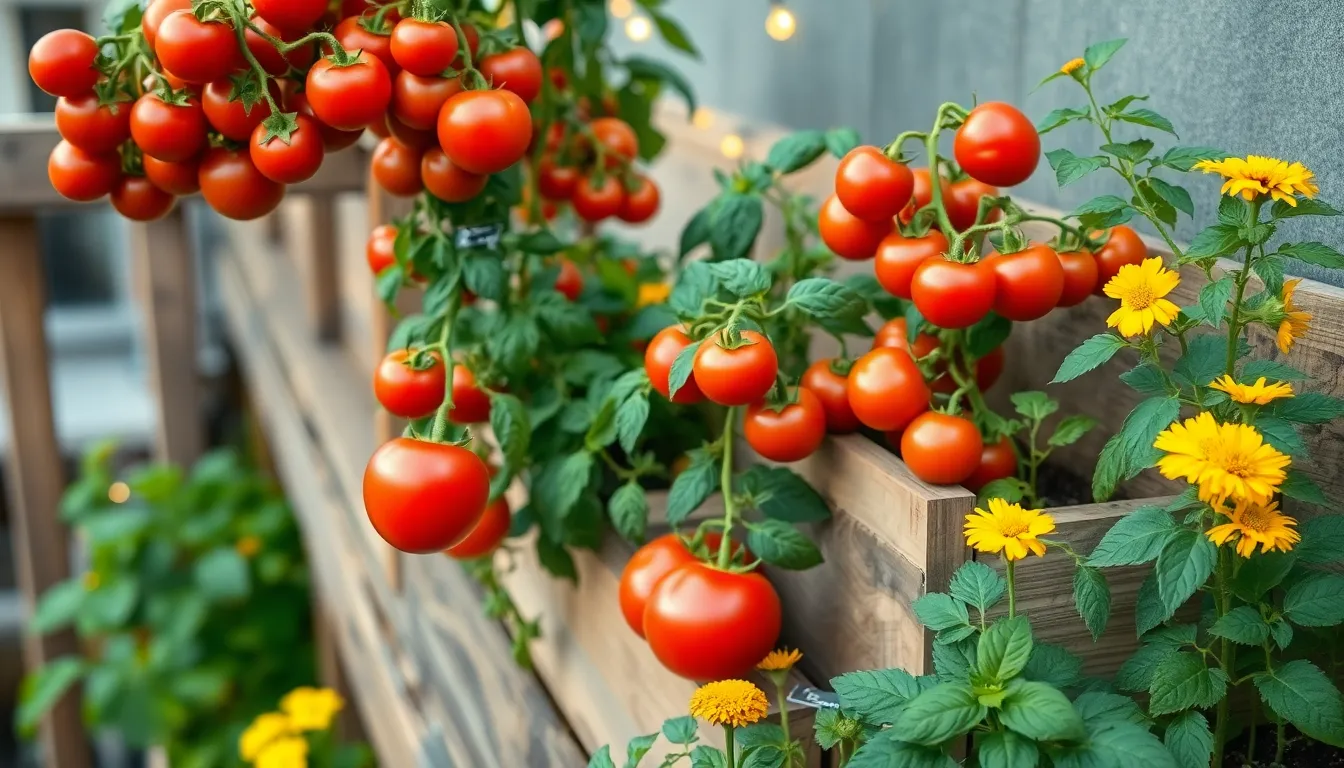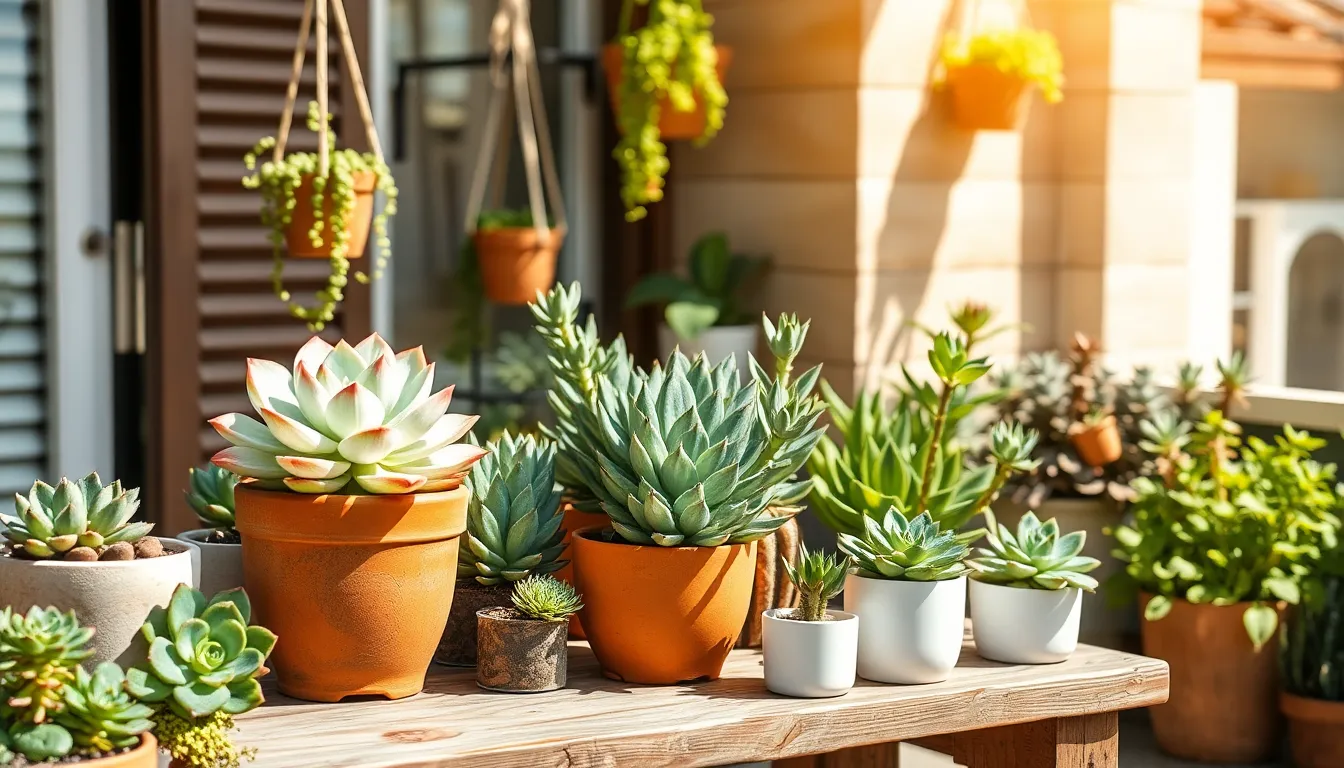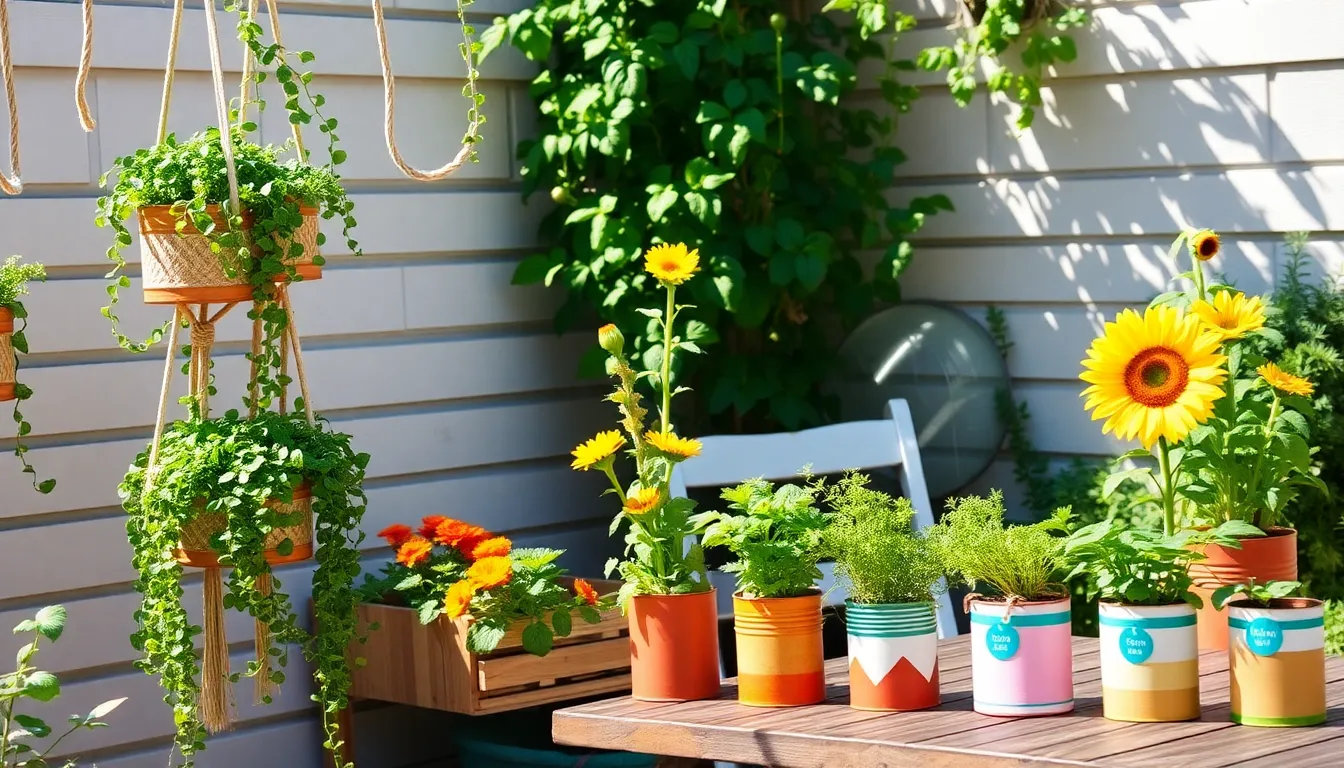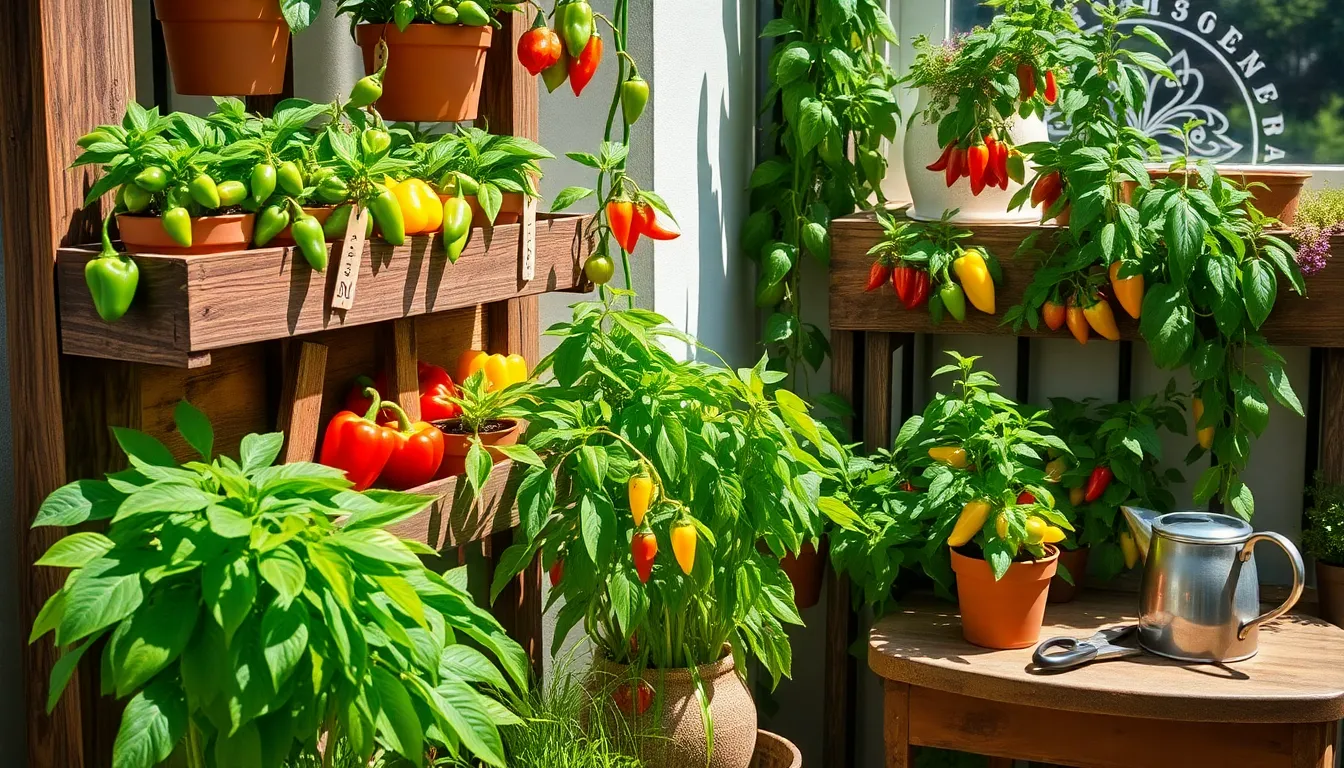There’s something incredibly rewarding about plucking a ripe, juicy tomato from a plant you’ve nurtured yourself. Whether you’re a seasoned gardener or just starting out with a few pots on your balcony, growing tomatoes in small spaces can be both a delightful and practical endeavor. In our fast-paced world, where space is often at a premium, the joy of cultivating your own fresh produce is a treasure worth uncovering. This article will guide you through the essentials of maximizing your limited gardening space to yield a bountiful tomato harvest.
For those new to gardening, the idea of growing tomatoes in tight quarters might seem daunting, but fear not! With the right techniques and a bit of creativity, even a small windowsill or patio can become a thriving tomato oasis. Experienced gardeners will find innovative tips to enhance their existing setups and discover new varieties suited for compact spaces. From container selection to watering strategies, you’ll learn how to create an environment where your tomato plants can truly flourish.
By understanding the unique needs of tomato plants and the constraints of small-space gardening, you’ll be equipped to tackle this rewarding challenge with confidence. We’ll explore soil choices, sunlight requirements, and even pest management tailored for those working with limited room. So roll up your sleeves and join us on this journey to transform your small corner of the world into a vibrant, tomato-producing haven. Together, we’ll cultivate not just plants, but also a deeper connection with the earth, no matter how confined the space may be.
Select Compact Tomato Varieties
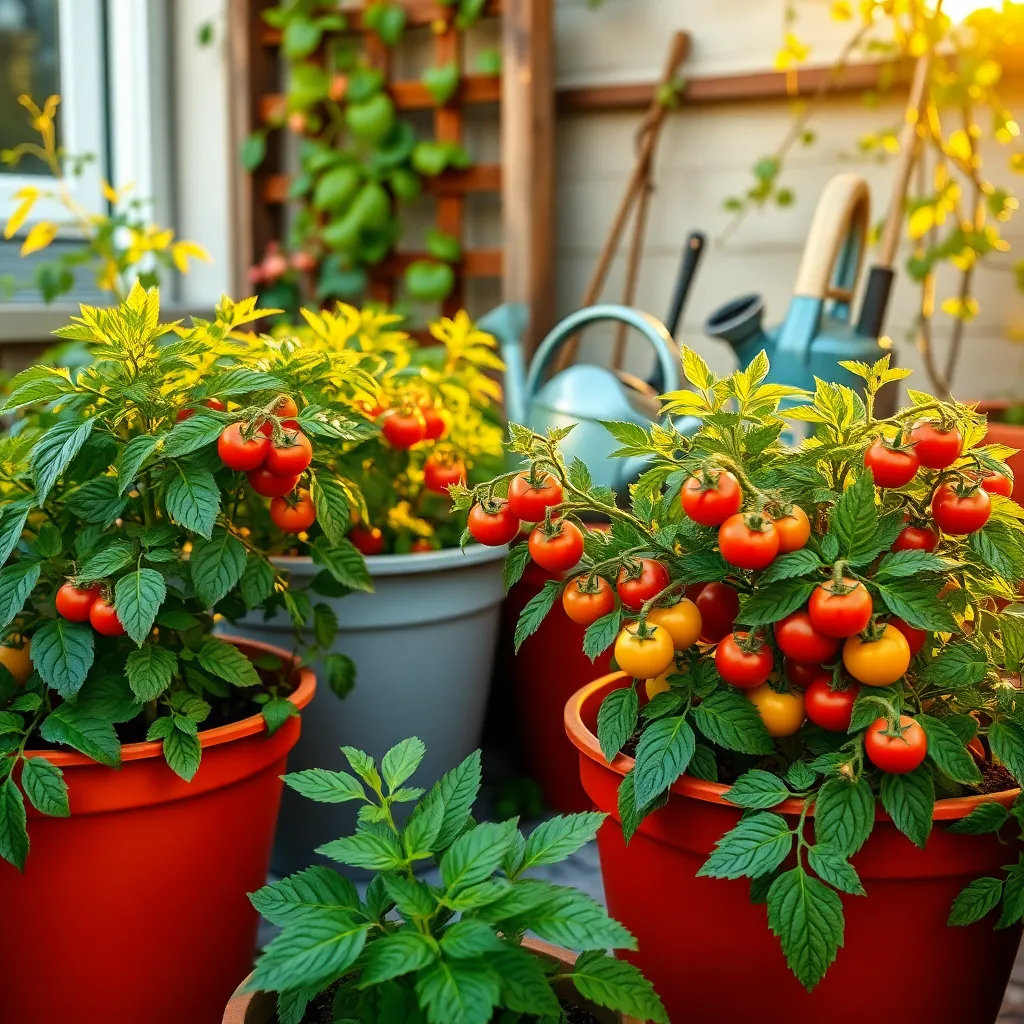
Choosing compact tomato varieties is essential for growing in small spaces. These varieties are specifically bred to thrive in containers and limited garden areas while still producing a generous yield.
Consider varieties like ‘Patio Princess’, ‘Tiny Tim’, and ‘Balcony’. These tomatoes are not only small in stature but also offer a delightful taste and vibrant color.
‘Patio Princess’ is a determinate variety, meaning it will grow to a particular size and stop, making it perfect for pots. It requires full sun, well-draining soil, and regular watering to thrive.
‘Tiny Tim’ is ideal for gardeners who have very limited space, such as a sunny windowsill or balcony. It’s a fast-growing variety that can produce fruit in as little as 60 days.
When planting compact tomatoes, use a pot that is at least 12 inches in diameter to ensure the roots have enough room. Fill the container with a high-quality potting mix that retains moisture but drains well to prevent root rot.
Regular feeding is crucial for container tomatoes since nutrients can leach out during watering. Use a balanced, water-soluble fertilizer every two weeks to keep your plants healthy and productive.
Keep an eye out for pests like aphids and whiteflies, which can be more prevalent in container plants. Regularly inspect your plants and use insecticidal soap or neem oil as needed to manage any infestations.
Use Space-Saving Containers
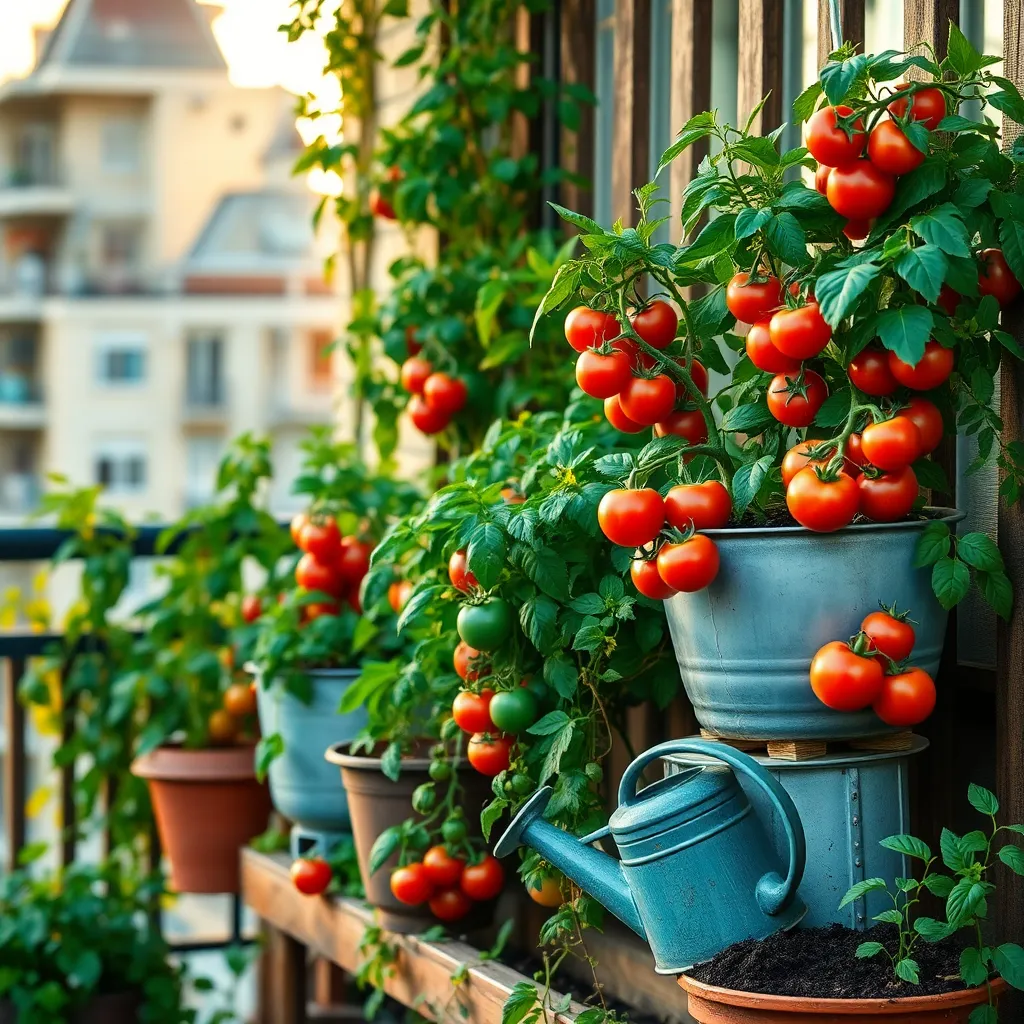
Maximize your space with **vertical gardening techniques** by using tall, narrow containers. These containers allow you to grow your tomatoes upwards, efficiently utilizing limited ground space.
Consider using **hanging baskets** to grow your tomatoes off the ground. This method frees up space below for other plants and helps improve air circulation around your tomato plants.
Opt for containers that are at least **12 inches deep** for growing healthy tomato plants. This depth ensures ample room for root development, which is crucial for robust plant growth and fruit production.
Choose containers made from **lightweight materials** like plastic or fabric to make moving them easier as needed. This flexibility allows you to adjust the plants’ position to capture the most sunlight or to protect them from harsh weather.
For those who want to experiment, try **self-watering containers** to maintain consistent soil moisture. These containers are especially helpful for beginners, reducing the risk of over or under-watering.
Optimize Sunlight Exposure
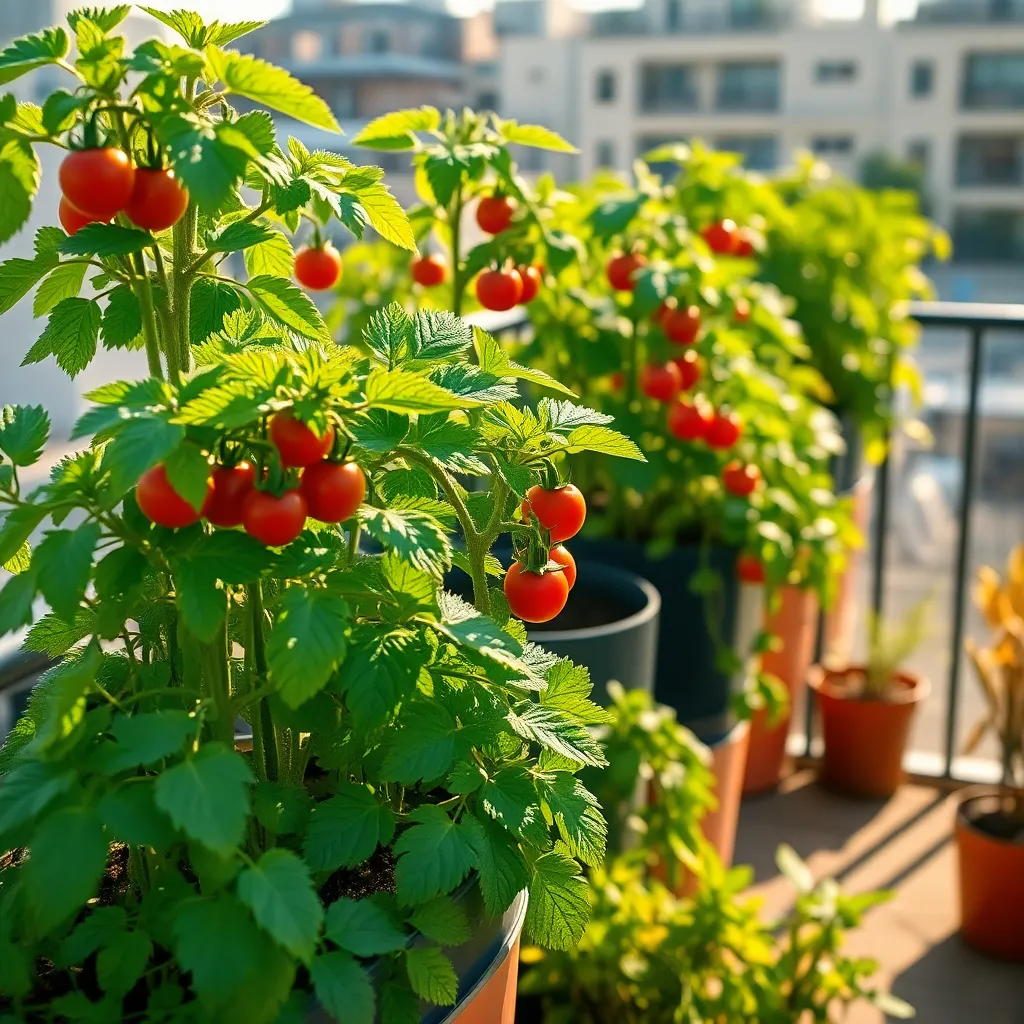
Ensuring your tomato plants receive optimal sunlight is crucial for growth, especially in small spaces. They thrive with at least 6 to 8 hours of direct sunlight daily, so it’s essential to locate your containers in the sunniest spot available.
Consider using reflective surfaces like white walls or mirrors to maximize sunlight exposure. These can help redirect sunlight onto your plants, ensuring they receive the necessary light even if your space is partially shaded.
For those with limited direct sunlight, utilizing grow lights can be a game-changer. Position these lights about 6 inches above the plants and keep them on for 12 to 16 hours per day to simulate natural sunlight.
It’s also beneficial to regularly rotate your containers to ensure all sides of the plants get equal sunlight exposure. This practice prevents your tomato plants from leaning toward the light source, promoting even growth and fruit production.
Implement Efficient Watering Techniques
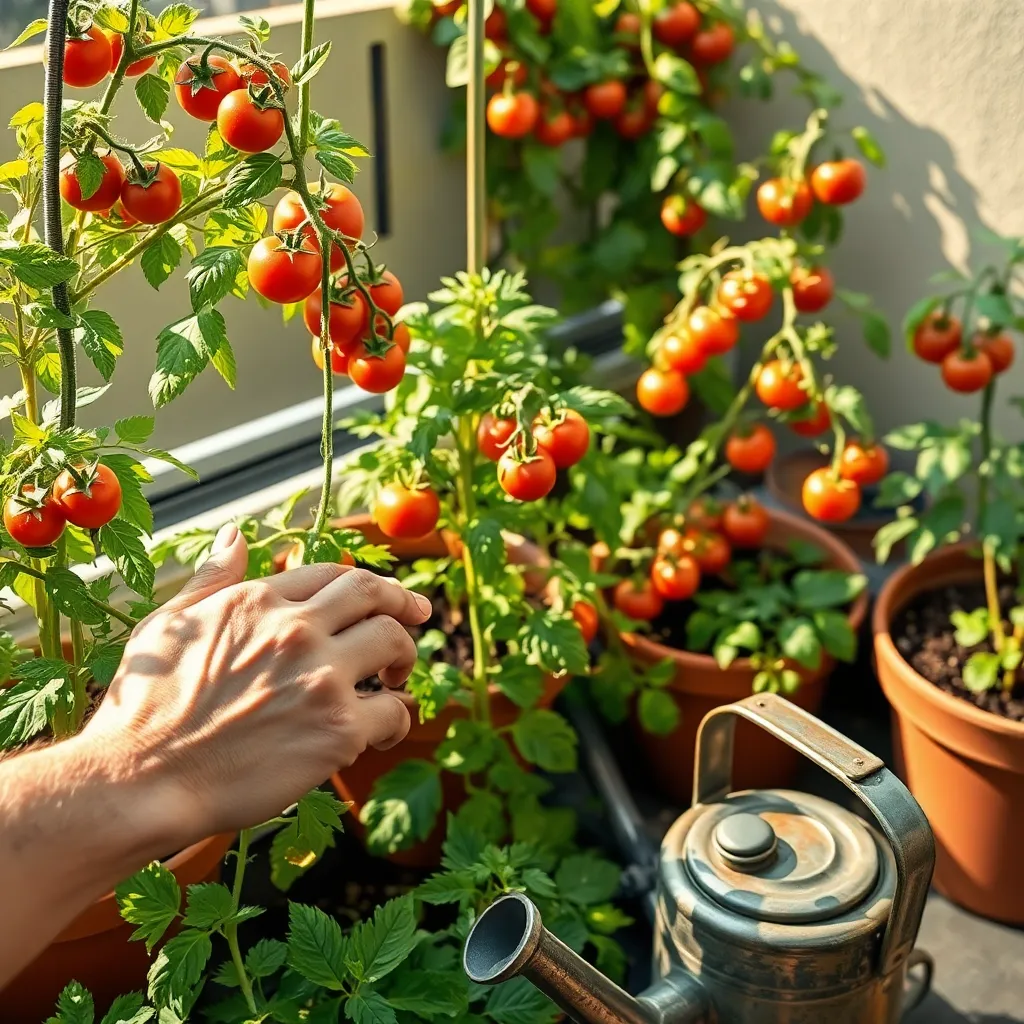
Efficient watering is crucial when growing tomatoes in small spaces, ensuring your plants receive the right amount of moisture without waste. Begin by using a drip irrigation system or a self-watering container to deliver water directly to the roots, minimizing evaporation and runoff.
For those without these systems, hand-watering can still be effective if done correctly. Ensure you water tomatoes early in the morning or late in the afternoon to reduce evaporation and allow the plants to absorb moisture before the sun gets too hot.
It’s important to check the soil moisture regularly to avoid overwatering, which can lead to root rot and other issues. Stick your finger about an inch into the soil; if it feels dry, it’s time to water. If it’s still moist, wait another day.
For advanced gardeners, consider using a moisture meter to achieve precise watering, especially if you’re growing tomatoes in containers where the soil can dry out quickly. This tool can help you avoid the common mistake of overwatering, ensuring your plants receive just the right amount of hydration.
Support Plants with Vertical Structures
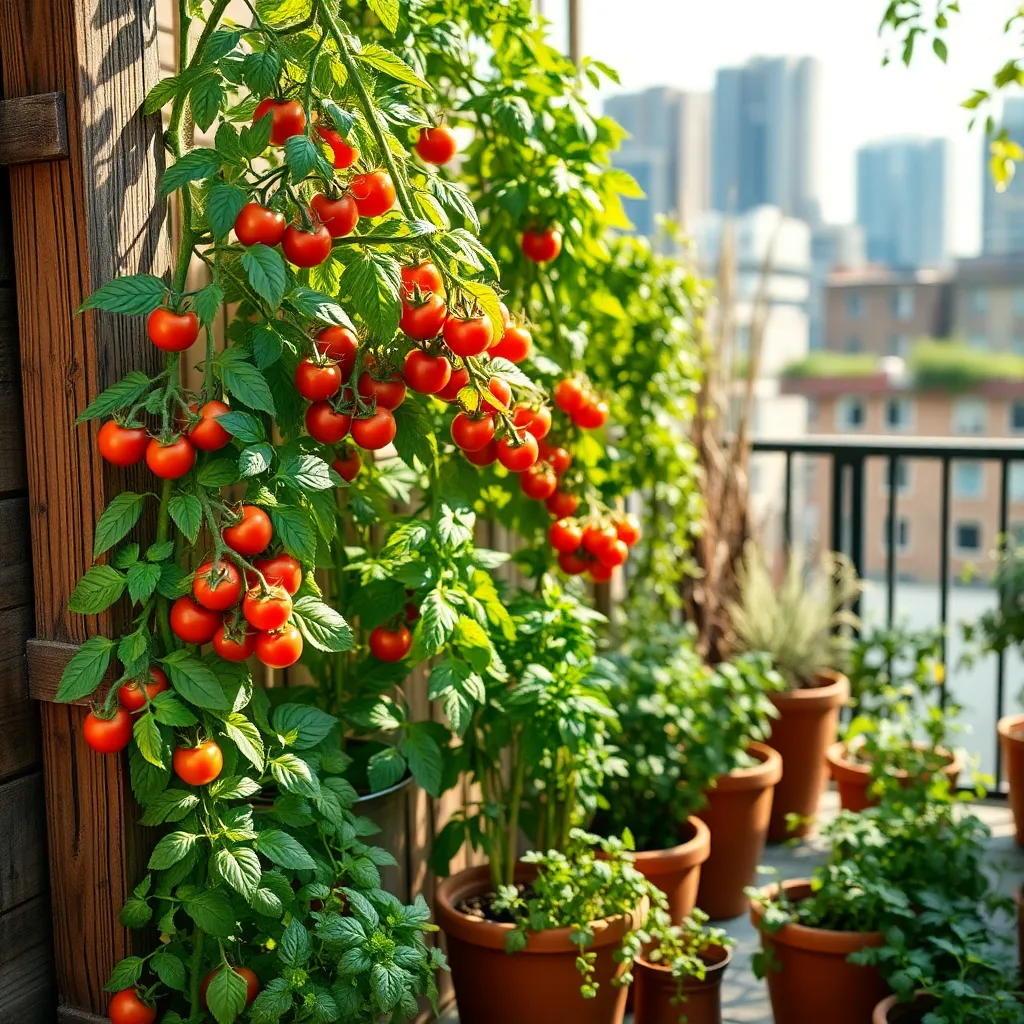
To maximize your tomato yield in small spaces, consider using vertical structures for support. These structures help keep the plants upright, ensuring they receive adequate sunlight and promoting better air circulation to prevent diseases.
Start by choosing a sturdy support system, such as cages, stakes, or trellises, that can handle the weight of mature plants. Tomato cages are easy to use and great for beginners, as they provide support without requiring any tying or complicated setup.
For those with a bit more experience, consider using a trellis system that allows for more creative plant arrangement and space utilization. Train your tomato vines gently along the trellis by tying them loosely with soft garden twine to encourage upward growth and avoid overcrowding.
Make sure to install your support structures when planting to avoid damaging the roots later on. This proactive step ensures that your plants can grow freely without the risk of snapping or bending under their own weight.
Conclusion: Growing Success with These Plants
In nurturing both a flourishing garden and a thriving relationship, the parallels are striking and insightful. First, we explored the importance of assessing your space—be it in the garden or your emotional landscape—to understand what can grow and thrive. Next, we delved into choosing the right variety, akin to selecting partners and friends who complement and enrich your life. We then discussed nurturing growth through consistent care and attention, mirroring the need for communication and quality time in relationships. We highlighted the significance of supporting structures, just as relationships need trust and mutual respect to flourish. Lastly, we examined the importance of patience and adaptability, essential in both gardening and navigating the complexities of human connections.
Now, take a moment to identify one relationship that could benefit from the nurturing principles discussed here. Reach out today and invest some time in fostering that connection. As you continue to cultivate your relational garden, don’t forget to bookmark this article for ongoing inspiration and guidance. Embrace the journey towards deeper, more meaningful relationships, and watch how they bloom with care and intention. Your efforts today will undoubtedly sow the seeds for future success and fulfillment.

